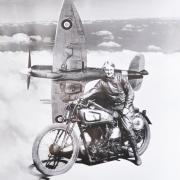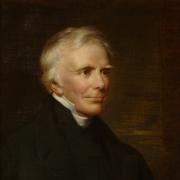‘Ordinary People Extraordinary Care’ may be the slogan for Hampshire & Isle of Wight Air Ambulance’s team – but we reckon they are superheroes
“It is challenging, it is demanding, it can be harrowing… But ultimately, from my point of view, and I’m probably speaking for most of the team, it’s the most rewarding work in terms of making a difference to patients’ lives,” so says John Gamblin, Specialist Paramedic Critical Care with Hampshire & Isle of Wight Air Ambulance (HIOWAA).
“Some days you go home and think that’s it, I’ve had enough. But I have a rest, talk to my wife about a job if it has been particularly upsetting, as indeed I did last night, and the next morning you’re up for it again. It’s a very positive workplace because of the team spirit we have fostered.”
John started his paramedic career in the Royal Navy before joining the London Ambulance Service and then moving to Hampshire in 2008. He completed his BSc in Paramedic Practice at Portsmouth University and is now studying towards an MSc at Southampton. He is just one of a very highly skilled team.
“All the paramedics on the team are committed to undertaking Masters in Advanced Practice at Southampton as part of our Critical Care programme. It is about upskilling. We are all very experienced, but to perform at the level required we have a robust programme of education which is a combination of professional courses, in children’s trauma for instance, and academic subjects such as pharmacology. A lot of the time, days off are taken up with study or doing something for the base. My job is also my hobby. I thought that was a bit tragic at one point, but I now see it as a good thing that I enjoy my job that much.”
Last year HIOWWA undertook a staggering 8208 missions: approximately a third were road traffic collisions; a quarter were cardiac arrests and collapses; 18 per cent were sports injuries and falls; 16 per cent were horse riding incidents; four per cent were industrial injuries and three per cent were transfers. Following a 999 call, the Air Ambulance can be airborne within four minutes and reach anywhere in Hampshire within 15 minutes and anywhere on the Isle of Wight within 20, delivering the same level of care you would expect from a hospital emergency department, including lifesaving interventions such as blood transfusions and anaesthesia.
The service operates 365 days a year, using an H135, the latest generation of EC135 helicopter, which can land in areas the size of a tennis court and on almost any terrain. Since the start of flying operations in 2007, the charity has steadily expanded its service. Landmark milestones include the introduction of regular doctor-led crewing (doctors are on board for 97 per cent of missions) and the start of night operations from 2016, crucially enabling the Air Ambulance to land on a motorway after dark, which in the winter months can mean any time from 4.00pm, at the height of rush hour traffic, providing emergency medical support where and when it is needed most.
In addition, a Critical Care Team vehicle, a specially converted Volvo 4x4, became operational in February 2017, providing a parallel service that’s able to get to more difficult to reach urban areas and operate when the helicopter is grounded because it is too wet or windy. Following the formalisation of a new three-way partnership between HIOWAA, University Hospital Southampton (the Major Trauma Centre for the southern region) and South Central Ambulance Service on 1 November last year, two more HIOWAA Critical Care Team Vehicles will become operational, both with new specialist equipment.
John continues: “We do four shifts: a car shift, two flying shifts and a desk shift where you sit in ambulance control trawling through and interrogating the jobs that come in, as not all of them are critically unwell, sometimes actually speaking to the patient to determine how serious it is. If they are seriously ill, we dispatch the helicopter. In the past we used to get dispatched a lot which is all time and fuel. This is about prioritisation and early identification.
“I usually start on the car shift which roves inner city areas around Portsmouth and Southampton which are not impossible to land in, but certainly more difficult. In the car we tend to support road teams with difficult medical conditions. The second shift tends to be the flying shift with a 50-50 split between trauma (such as a motorcycle accident) and what we call Big Sick medical (such as heart attacks and cardiac arrests).
“We really do see ourselves as just part of the wider team that starts with the community responder turning up and ends up with Intensive Care Units further down the line. The care we deliver is cutting edge and it’s great to be at the forefront of pre-hospital care, but we couldn’t do what we do without the great paramedics and the ambulance crews out there. The road ambulance crews still do the lion’s share of the work. We just add some very specialised care to the excellent care already available.”
Behind these highly skilled crews is another amazing team: the fundraisers. One such is Pete Burch. Pete’s life was saved by the air ambulance service when he was involved in a motorbike accident in March 2015. He was just 27 when a car pulled out in front of him, leaving him partly paralysed. He has, however, succeeded in returning to work, this time as part of the fundraising team for the service that saved his life. Pete is HIOWAA’s Trusts and Foundations Fundraiser – managing a vital source of income which makes a significant difference to HIOWAA’s ability to continue saving lives.
“I joined two years ago in June. I was working with charities fundraising before my motorcycle accident. I spent most of 2015 in hospital and my old boss, who is now Chief Executive of HIOWAA, said, ‘Pete, let’s get you down here’. I started on two days a week, then three, then four… It is the best job I’ve ever had. It was a fantastic experience to go out with the crew in the Volvo and witness a day in the life of the team (which included two cardiac arrests and a horrific head-on car accident where three people died and another probably lost his leg). It can be brutal, but that is all in a day’s work. Our crew are just normal people.”
It costs around £15,000 a day to run this service which is dependent on the generosity of the community HIOWAA serves. Pete continues: “This is a massive undertaking and we rely on the support of the public. We have cheques presented from lodges and rotary clubs who are all very supportive, teams and individuals undertake sponsored challenges such as sky-diving and abseiling; we attend events and run a really successful lottery programme.
“We have so much pride in the Charity. We all work hard to keep that helicopter in the air.”
More…
• Hampshire and Isle of Wight Air Ambulance - meet the crew - Every year our Hampshire and Isle of Wight Air Ambulance crew attend to thousands of people who need help. Here we meet some of those working and volunteering for the charity who make it so special



























